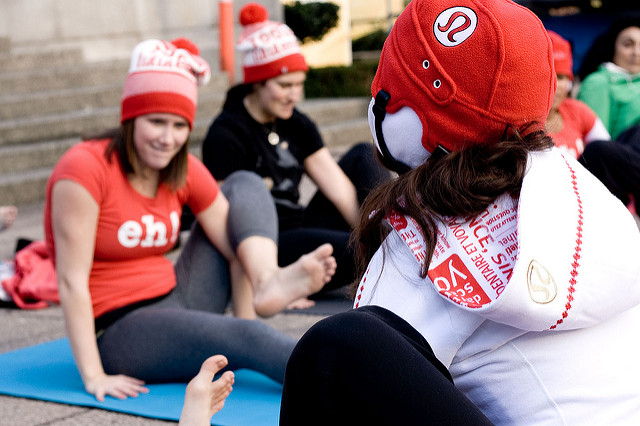Unlock the Magic in Your Story Now
Get the Free 20 questions to Ask Before Launching Your Idea workbook when you sign up for occasional updates.
Get the Free 20 questions to Ask Before Launching Your Idea workbook when you sign up for occasional updates.
Articles filed in: Strategy
What Are You Here To Do?
filed in Marketing, Storytelling, Strategy
 When Deborah Thomas, newly minted CEO of Ardent Leisure, was asked if she knew how to operate a roller coaster, she probably gave an inward sigh along with her considered response.
When Deborah Thomas, newly minted CEO of Ardent Leisure, was asked if she knew how to operate a roller coaster, she probably gave an inward sigh along with her considered response.
“I’m not here to operate the roller coaster; I’m here to make sure that people queue up and want to spend their money to take a ride on it.” she said.
Of course it takes more than knowing how to pull the lever to keep the roller coaster moving.
It’s easy to get caught up attending to someone else’s agenda, to spend time micro-managing, or lose yourself in the day’s minutiae. It feels good to respond to email, discuss tactics and to be kept busy. But you need to be clear about your own priorities. Once you prioritise and show others how to do that too everybody knows how to play their part.
What are you really here to do?
Image by Massachusetts Tourism.
The Shortcut To More
filed in Marketing, Storytelling, Strategy
 It’s probably safe to assume that at some point in the past few months you’ve wondered how to get more traffic, customers, subscribers, Facebook likes, retweets, awareness, sales, exposure and on and on. Because the job of traditional marketing is to convince and convert, we are used to beginning our marketing journey there.
It’s probably safe to assume that at some point in the past few months you’ve wondered how to get more traffic, customers, subscribers, Facebook likes, retweets, awareness, sales, exposure and on and on. Because the job of traditional marketing is to convince and convert, we are used to beginning our marketing journey there.
What if you flipped your thinking on its head? Now instead of beginning your internal marketing dialogue by wondering how you might change what people do, you can start by wondering what change you’re trying to create instead.
Start by listing three reasons why the people you want to serve will pass a competitor and cross the road to buy from you.
Once you get clear about the difference you create for people, the marketing strategy becomes obvious. The shortcut to more is to matter.
Image by Garry Knight.
Company Culture And The Ripple Effect
filed in Storytelling, Strategy
 By the age of six months, a baby begins to understand that his actions can affect his environment.
By the age of six months, a baby begins to understand that his actions can affect his environment.
It’s amazing how as adults we quickly unlearn this.
As business leaders when we talk about shaping or changing company culture we sometimes forget to own the fact that we are the culture. Culture is not something that is laid down in a strategy document, or changed in the blink of an eye at an offsite event designed to rally the troops. Culture is how we act every day. It’s impacted by how we as individuals choose to behave and evidenced in the ripple effect that our actions catalyse.
When we seek change we often start by looking to see what we can change in others, forgetting that the ripples begin right where we are.
Image by Dave Goodman.
Shortcuts Are Overrated
filed in Storytelling, Strategy
 A map works even though the cartographer hasn’t described how every step should be taken.
A map works even though the cartographer hasn’t described how every step should be taken.
We get to where we want to go when we have a good reason for going there.
Tactics are useless without a strategy.
Shortcuts are overrated.
Results take time.
Why hurry?
Image by Franco Folini.
The Purpose Of Clever Packaging
filed in Marketing, Storytelling, Strategy
 If you love chocolate as much as I do you’ve probably heard about the Mast Brothers scandal.
If you love chocolate as much as I do you’ve probably heard about the Mast Brothers scandal.
The artisan chocolate makers are accused of not being completely transparent about their process when they launched in 2007 and of pulling the wool over customers eyes with “clever packaging”.
Transparency aside for a moment, because of course what’s inside the wrapper has to fulfil the promise the packaging makes. Packaging should be clever and intentional. If we’re not deliberately trying to create a connection with our customers in everything we do then what’s the point? Wrappers are the opening line of the brand story.
The ‘once upon a time’. The first thing the customer notices, touches and experiences.
The story we give her to tell, (often to herself).
The inconspicuous red sole of a Christian Louboutin shoe. The encouraging manifesto on a Lululemon bag. The highly researched and purposefully created unboxing experience of an Apple product. And yes, the gorgeous paper on a Mast Brothers chocolate bar—all clever packaging that customers are happy to pay for because of how it makes them feel.
Intangible value is something customers crave. The question packaging design must address isn’t how to charge more for average stuff, it’s how to change what the customer feels.
Image by Jen Collins.
The Alternative To Winning The Awareness Game
filed in Marketing, Storytelling, Strategy
 The top 200 advertisers in the U.S. spent $137.9 Billion on ads in 2014. When you’ve got those resources it’s easy to play the awareness game.
The top 200 advertisers in the U.S. spent $137.9 Billion on ads in 2014. When you’ve got those resources it’s easy to play the awareness game.
What if newspaper presses came to a stop and banner ads were abolished on the grounds of inciting mindless consumption? Imagine a world where billboards were torn down to combat visual pollution and TV channels stopped interrupting programs with commercials.
What would our options to woo our customers be then?
There is more than one way to become both top of mind and close to heart. Patagonia employs 45 full time technicians to repair customer’s old and damaged clothing for free. Warby Parker offers a 5 day home try-on service. Tenzing Men’s Skincare sends free samples to prospective customers. Our local cafe invests in staff training to ensure that customers experience the best service in the world. Lululemon holds complimentary yoga classes and events. And these businesses link their sales to giving impacts with the help of B1G1.
What could you commit part of your advertising budget to in order to get closer to your customers?
Image by Shinsuke Ikegame.
Meaningful Work
filed in Storytelling, Strategy
 We’ve all witnessed a version of this in action. The speciality restaurant vowing to serve free range, grass fed and organic. The gift shop committed to selling local and artisanal. The designer who refuses to work with fast food companies. Uncompromising—until they think about scaling or they hit a bump in the road of their business.
We’ve all witnessed a version of this in action. The speciality restaurant vowing to serve free range, grass fed and organic. The gift shop committed to selling local and artisanal. The designer who refuses to work with fast food companies. Uncompromising—until they think about scaling or they hit a bump in the road of their business.
Staying committed to your intention, keeping the promises you made to the people you serve (and to yourself)—choosing to amplify your difference is at the heart of meaningful work.
What makes a compelling brand, an unforgettable book, or a piece of music that moves us is what the creator has chosen to leave out. The silence between two notes.
As the composer Gustavo Santaolalla said, “Not playing is sometimes more difficult.”
Knowing which notes to play is what makes all the difference.
Our job isn’t to play every possible note.
It’s to play one note every day that we’re proud to have played.
[And often to enable other people to do the same.]
Image by Timothy V.
 The cafe was tiny and packed.
The cafe was tiny and packed. When we market our products to customers we often use a persuasive tone designed to convince. We describe by leading with features and benefits. We try hard to give customers reasons to choose, forgetting that most purchasing decisions are not rational, but emotional.
When we market our products to customers we often use a persuasive tone designed to convince. We describe by leading with features and benefits. We try hard to give customers reasons to choose, forgetting that most purchasing decisions are not rational, but emotional. How is it that we can go into the same cafe two days running, order the same drink, pay the same price and yet leave feeling entirely different about the experience depending on the interaction we have with the person who is serving?
How is it that we can go into the same cafe two days running, order the same drink, pay the same price and yet leave feeling entirely different about the experience depending on the interaction we have with the person who is serving?